The health and economic benefits of the global programme to eliminate lymphatic filariasis (2000-2014)
- PMID: 27388873
- PMCID: PMC4937583
- DOI: 10.1186/s40249-016-0147-4
The health and economic benefits of the global programme to eliminate lymphatic filariasis (2000-2014)
Abstract
Background: Lymphatic filariasis (LF), also known as elephantiasis, is a neglected tropical disease (NTD) targeted for elimination through a Global Programme to Eliminate LF (GPELF). Between 2000 and 2014, the GPELF has delivered 5.6 billion treatments to over 763 million people. Updating the estimated health and economic benefits of this significant achievement is important in justifying the resources and investment needed for eliminating LF.
Method: We combined previously established models to estimate the number of clinical manifestations and disability-adjusted life years (DALYs) averted from three benefit cohorts (those protected from acquiring infection, those with subclinical morbidity prevented from progressing and those with clinical disease alleviated). The economic savings associated with this disease prevention was then analysed in the context of prevented medical expenses incurred by LF clinical patients, potential income loss through lost-labour, and prevented costs to the health system to care for affected individuals. The indirect cost estimates were calculated using the human capital approach. A combination of four wage sources was used to estimate the fair market value of time for an agricultural worker with LF infection (to ensure a conservative estimate, the lowest wage value was used).
Results: We projected that due to the first 15 years of the GPELF 36 million clinical cases and 175 (116-250) million DALYs will potentially be averted. It was estimated that due to this notable health impact, US$100.5 billion will potentially be saved over the lifetimes of the benefit cohorts. This total amount results from summing the medical expenses incurred by LF patients (US$3 billion), potential income loss (US$94 billion), and costs to the health system (US$3.5 billion) that were projected to be prevented. The results were subjected to sensitivity analysis and were most sensitive to the assumed percentage of work hours lost for those suffering from chronic disease (changing the total economic benefit between US$69.30-150.7 billion).
Conclusions: Despite the limitations of any such analysis, this study identifies substantial health and economic benefits that have resulted from the first 15 years of the GPELF, and it highlights the value and importance of continued investment in the GPELF.
Keywords: DALYs averted; Economic impact; GPELF; Health impact; Lymphatic filariasis; Programme evaluation.
Figures
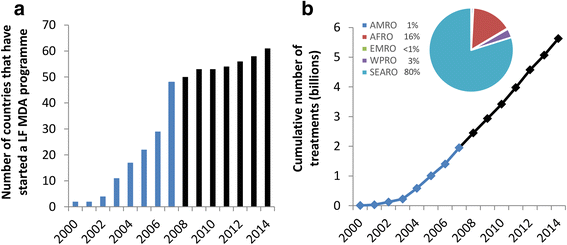
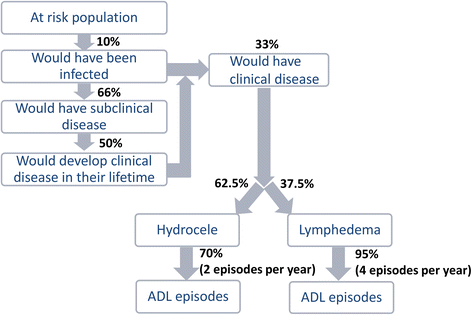
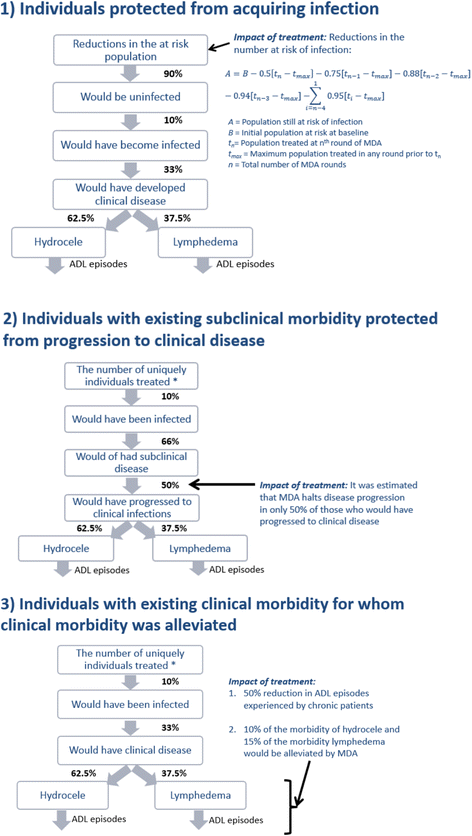
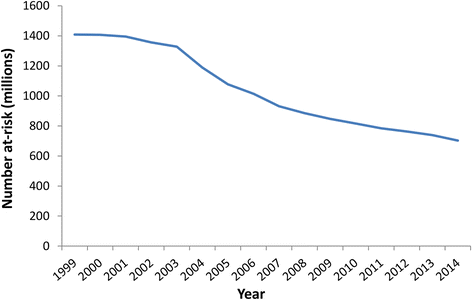
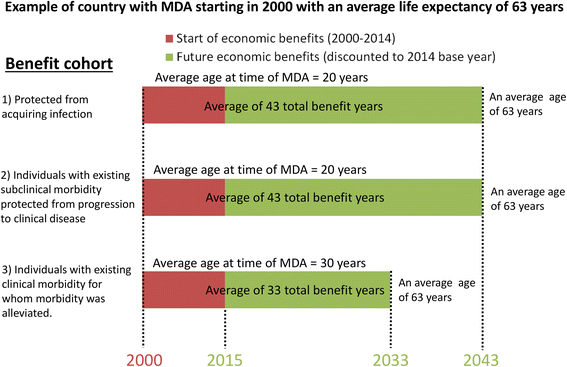
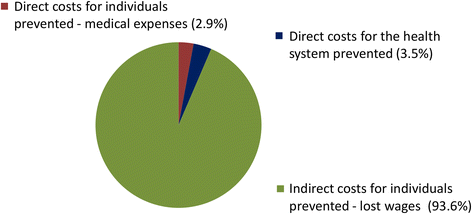
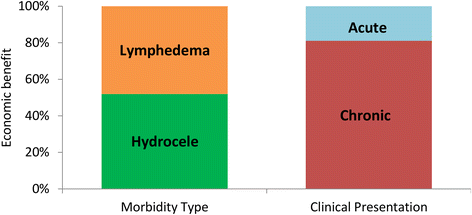
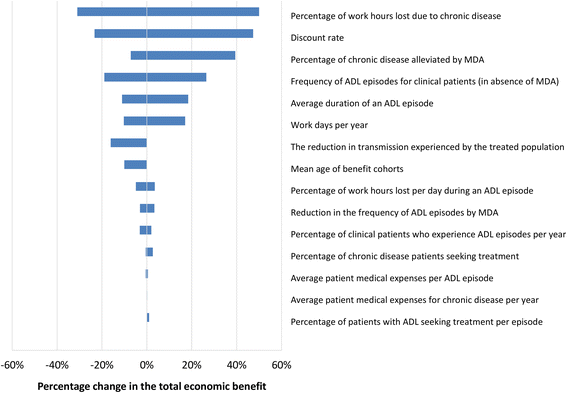
References
-
- Remme JHF, Feenstra P, Lever PR, Medici AC, Morel CM. Tropical diseases targeted for elimination: chagas disease, lymphatic dilariasis, onchocerciasis, and leprosy. In: Jamison DT, Breman JG, Measham AR, editors. Disease control priorities in developing countries. New York: Oxford University Press; 2006. pp. 433–449.
-
- World Health Organization. PCT databank: Lymphatic filariasis [http://www.who.int/neglected_diseases/preventive_chemotherapy/lf/en/].
MeSH terms
LinkOut - more resources
Full Text Sources
Other Literature Sources
Medical

